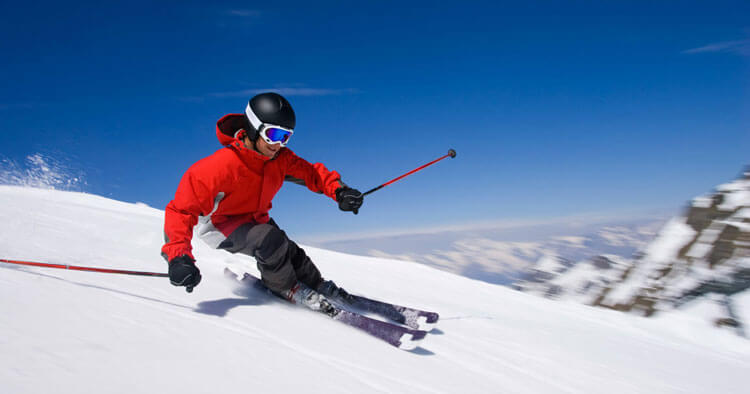Back and Joint Pain, Sports Injuries and Management
Skier’s Thumb
What Is Skier’s Thumb?
Skier’s thumb also known as gamekeeper’s thumb is a tear to the ulna collateral ligament (UCL). This ligament is commonly injured as the result of a sudden ulnar-deviating, or hyperextending force applied to the thumb by the straps of a ski pole during a fall, which is where the injury draws its name from.
With Skier’s thumb the UCL may be torn, damaged, or in some cases avulsed from its insertion site (an avulsion injury at this site is where the ligament pulls away from the main bone taking a little bit of bone with it). A patient with a skier’s thumb will generally complain of pain over the ulnar side of the thumb at the knuckle closest to the wrist joint, the ulna side is the side of the thumb when you palm is facing forwards that is closest to your body. The injury will often be associated with some localised swelling and tenderness on palpation of the area.
The long term risk associated with an untreated skier’s thumb is persistent pain and weakness, which is at its worst during activities involving a pinch grip. During a pinching action the UCL is crucial in stabilising the thumb joint at the knuckle closest to the wrist. Laxity in the ligament, restricted mobility due to scarring, sensitivity due to pain can all impact the gripping and manipulation of objects if not addressed.
Management Of Skier’s Thumb Injuries
History of injury, a thumb X ray and appropriate stress testing to the UCL (clinical stability testing) is key to making a diagnosis of UCL injury.
- Patients with a skier’s thumb injury that indicates the need for surgical repair should be promptly sent to visit an orthopedic hand surgeon to make sure receiving the correct treatment isn’t delayed.
- Lower grade skier’s thumb injuries such as grade 1 & 2 UCL injuries can be successfully treated by conservative methods (meaning non-surgically). Conservative treatment approaches include immobilization, this is often around a period of six weeks, followed with active physiotherapy in an attempt to help restore movement and strength to the area. Ideally the joint should be protected from full stress for around 3 months after injury, allow complete healing. This prolonged duration of protection means for many, a delay in returning to high risk sports and loading activities.
Surgery For Skier’s Thumb
Surgical repair is indicated in the following situations:
• A complete ulna collateral ligament rupture.
• The presence of displaced, or large avulsion fractures.
To prevent chronic painful instability, weakness of pinch grip, and development of osteoarthritis at the joint, surgical treatment is recommended in the above listed situations. Following surgery the patient can be guided by their physiotherapist through their rehabilitation, the rehabilitation will generally involve progressive use of stretching exercises to assist with a full return of ROM, strengthening exercises for the muscles of the hand and thumb, appropriate manual therapy as guided by surgical protocols. The use of strengthening exercises can be used to help the return to full function and should be well rounded, but focus particularly on the strength components that are necessary to that individuals particular sport, or hobbies.
Returning To Sport Following Thumb Injury
Frequently patients wish to return to high risk sports following a skier’s thumb injury, frequently the very sport that caused the injury in the first place. In these situations the patient should have a clear understanding that there is a potential for worsening of their condition from further/repeat injury. Where possible protective splinting, or taping should be considered with the goal of preventing any further injury to the area, again a physiotherapist can generally help guide on the use of appropriate sports taping and/or bracing following thumb injury.
Disclaimer: Sydney Physio Clinic provides this information as an educational service and is not intended to serve as medical advice. Anyone seeking specific advice or assistance on Skier’s Thumb should consult his or her physiotherapist, sports medicine specialist, orthopedic surgeon or otherwise appropriately skilled practitioner.


